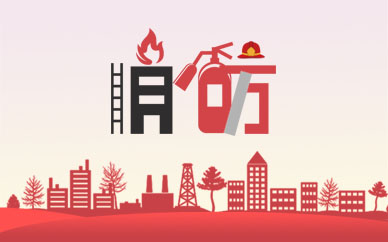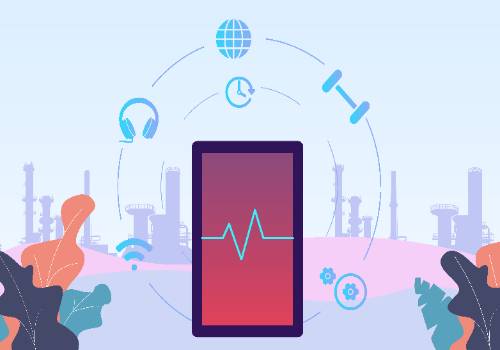Slide to Chinese
 (資料圖片)
(資料圖片)
Chemistry
at ISNS
“Chemistry is all about what our world is made of. It"s about the different types of materials that make up not only our world but also the whole universe.”
At ISNS, we plan and teach science in a fun and engaging way to ensure that our students from G6 all the way to G12 are fostered their critical and creative thinking about research and design, as well as the identification of assumptions and alternative explanations. This week, we interviewed our High School Chemistry and Environmental Systems and Societies’ teacher Juliet Keister to learn more details about the two subjects.
Framework of Chemistry
Lower MYP
When we start talking about chemistry to the 6th graders. Their understanding is basically the 3 states of matter: solid, liquid and gas.
And then each year they build more and more chemistry knowledge. For example, the 7th graders will learn about mixtures. They have some fun activities like making crystals and investigating all about solutions.
In grade 8, we introduce the periodic table, which are all of the different known elements of the universe.
Upper MYP
By grade 9 students are able to learn more about elements, molecules and compounds. It is very practical and hands on. We do a lot of different labs. It really combines the practical skills with the theoretical knowledge.
Then in grade ten, there are still practical but it"s more knowledge based. Students are going to talk about what nuclear chemistry is, how scientists use chemistry to generate energy. They do experiments using calculations to predict what they expect to see and then compare their calculations to what they actually get in the laboratory.
All of this is to prepare them if they choose chemistry as their DP subject. In DP chemistry, students would be learning even more content and they will have the opportunity to do their IA which is internal assessment.
Environmental Systems and Societies in DP
Environmental systems and societies is a really good interdisciplinary course. Students can take it to fulfill their INS credit or their science credit. It"s actually a hybrid. It brings together sciences of the natural world with focus on ecology and some chemistry, married together with what humans are doing, why they are doing it, what the causes are and any effects. We do look at a lot of global problems but it"s very solutions focused.
“When I teach, I really try to promote what we can do about it, what people are doing now and what you could do. It is a highly relevant course. It takes the systems approach looking at things in the big picture. “
If a student is really invested in science, then they might take this as their Individual and Society (I&S) credit. If they are using it for their science credit, they have to have a different I&S. They can"t get both.
How MYP transit to DP
In grade 9 and 10 we have it set up, where students are exposed to content from each of the four different DP classes.
By the end of grade ten, students should know which one they really want to dig into deeper, then transitioning into DP. There is a greater focus in DP on test taking skills: how to do well on a written assessment. We are focusing on how you succeed on a test and also enjoying doing experiments. It is really pushing the student"s conceptual understanding to the next level.
For example, in grade 9 we focus on their collaboration skills in a chemistry project. Students collaborate on is a unit about soil chemistry. They will be given their dependent variable and the tool to measure the dependent variable but they have to discuss with their partner what they want their independent variable to be, which also requires creative thinking. This experiment is different than other ones they"ve done, because every group has a different independent variable. The variables will lead to different outcomes. It"s good for the students to realize when you do a real experiment, you actually don"t know what"s going to happen. It is about agency. The grade 9 and 10 students are old enough to learn no matter what happens, as long as you learn something it"s a success.
Chemistry summative assessments
Chemistry has summative assessments throughout MYP and DP. Students need to do at least one strand of each criterion instead of always doing full criteria. For example, the lab that we just did with my 10th graders. Students are given the background information and the research question and procedures. For criterion B, they just had to write their own hypothesis and do calculations and then proceed. They will only be assessing the evaluation not on a graph. In that way, they are able to practice each type of skill in each unit and they will complete each strand twice throughout the year, but no pressure on doing a full ABC and D in every unit.
“Tips for learning chemistry
“Whenever you feel lost, remember the most important difference between one type of thing and any other type of thing is the number of protons in the nucleus of the atom. The other advice that I always give is remember to take breaks. If you feel confused or overwhelmed, you should either ask for help or just take a break and try again later.”
--Juliet Kiester
MYP Chemistry and Environmental Systems and Societies’ teacher
滑動查看英文
化學
ISNS
“化學是關系到我們的世界是由什么構成的。它是關于不同類型的元素,這些元素不僅構成了我們的世界,也構成了整個宇宙。”
在ISNS,我們以有趣和引人入勝的方式規劃和教授科學,以確保從G6到G12的學生都能培養他們對研究和設計的批判性和創造性思維,以及假設和替代解釋的識別。本周,我們采訪了我們高中的化學與環境系統和社會教師Juliet Keister,深入的了解更多關于這兩門學科的內容。
化學課程框架
中學低年級
當我們開始向六年級學生提到化學時。他們的理解基本上是物質的三種狀態:固體、液體和氣體。然后每年會積累越來越多的化學知識。
例如,七年級學生會學習混合物。同學們會有一些有趣的活動,例如制作晶體和研究所有有關解決方案的方法。在八年級,我們介紹了元素周期表,學習宇宙中所有不同的已知元素。
中學高年級
到九年級時,學生能夠更多地了解元素、分子和化合物。我們的學習單元非常實用且易于實踐。我們會做很多不同的實驗,將實踐技能與理論知識結合起來。
然后在十年級,仍然有實踐,但更多的是基于知識積累。學生們將討論什么是核化學,以及科學家如何使用化學來產生能量。他們通過計算來進行實驗,以預測他們期望看到的結果,然后將計算的結果與在實驗室中實際得到的結果進行比較。
如果學生們選擇化學作為他們的DP科目,所有這些都是為了讓他們做好準備。在DP化學中,學生將學習更多內容,他們將有機會進行內部評估。
DP環境系統和社會學
環境系統和社會是一門非常好的跨學科課程。學生可以用它來完成他們的個人與社會(I&S)學分或科學學分,它實際上是一個混合體。它匯集了自然界的科學,重點是生態學和化學,結合了人類正在做的事情、他們為什么這樣做、原因是什么以及造成的影響等等。我們會關注很多全球性問題,但同時也非常注重解決方案。
”當我教授這門課時,我會去主張學生們思考我們可以為此做些什么,人們正在做什么以及你個人可以做什么。這是一門高度和現實相關的課程。它采用系統方法,從大局著眼”。
修大學預科學分,如果學生真的對科學感興趣,那么他們可能會將其作為個人和社會學分。如果他們將其用于科學學分,則他們必須選擇其他的個人和社會課。你不能用一門課, 修兩者兼得的學分。
MYP與DP的銜接
在九年級和十年級,我們為學生設計的內容,可以接觸到所有四門DP科學課程。
到十年級結束時,學生們應該知道他們真正想深入研究哪一個,然后過渡到DP。DP更加關注應試技巧:如何在書面評估中取得好成績。我們專注于幫助學生在測試中取得成功,同時享受做實驗的樂趣,這樣確實將學生的概念理解推向了一個新的水平。
例如,在九年級時,我們會重點培養他們在化學項目中的協作技能。其中一個學生協作的單元是土壤化學。我給他們因變量和工具測量因變量,他們需要與小組討論他們希望自變量是什么,這也需要創造性思維。這個實驗與他們做過的其他實驗不同,因為每個組都有不同的自變量。變量會導致不同的結果。在做真正的實驗時,讓學生意識到你實際上并不知道會發生什么,這是有益處的,因為這是能動性學習的體現。對于九年級和十年級的學生來說,不管實驗結果如何,只要你學到了東西就是成功的。
化學總結性評估
化學在整個MYP和DP中都有總結性評估。學生需要至少完成每個評估的一部分標準,而不需要總是完成所有的。例如,我剛剛與十年級學生一起做的實驗。學生們可以根據提供的背景信息以及研究問題和步驟。對于評估標準B,他們只需編寫自己的假設并進行計算,然后再繼續完成這個單元。只有這個部分會被評估,他們不需要繪制圖表。通過這種方式,他們能夠在每個單元中練習每種類型的技能,并且他們將在一年中完成每個標準兩次,而不需要每個單元都完成完整的四個標準ABC和D。
“學習建議
“當你學習遇到疑惑時,記住,一種物質與任何其他物質之間最重要的區別是原子核中的質子數不同。我經常給出的另一個建議是注意適時休息。如果你感到困惑或壓力過大,可以尋求幫助或休息一下,調整好再來。”
--Juliet Kiester
MYP化學與DP環境系統與社會學老師
關鍵詞:



















 營業執照公示信息
營業執照公示信息